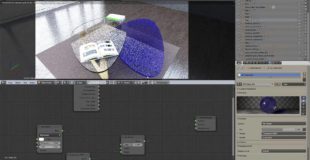https://i.ytimg.com/vi/ssH0QpzHDdU/hqdefault.jpg
In this video we show you how to make physically realistic glass quickly with the light path node, among a couple other neat things.
If you want a hard-copy of this video for your computer, comment or email and someone will upload it to our server with a link for downloading!
Please subscribe to see more videos like this in the future. If you learned something or this helped you in any way, then please like the video and sub. If you disliked it: don’t just leave or thumbs down, instead post a comment telling us what we can improve in the videos, we strive from community input.
If you have a request for a tutorial, please comment or send us off an e-mail at info@blendertek.com. Commission requests or business inquiries can follow the same directions. Thanks,
The BlenderTek.com Team.
source

11 responses to “Howto use the Light Path Node to make Realistic Glass in Blender – 2.73 beta”
A really useful tutorial on making a glass texture. I also found: that if you change the colour to a very light cyan: and then add a noise texture node to the displacement of the material output. You can bring the scale of the noise texture up to 25: and make a cool water texture too: which could be used for a stream, or the water in a fountain.
I'm very new to blender but i am in second life (virtual world) a lot and wanted to create some realistic items, i really would like to make a wine bottle with a nice texture and label and a wine glass with wine inside the glass, is it possible you can make some tutorials on this?
keep making your tutorials, your very smart!!!
very nice video, and for the haters lay off of him, where the hell is your video…
Thanks! This was really helpful. But…was you a bit high or something? XD
You should probably organize your ideas before posting a video, you could have done this video in 1/3 the time… other than that good job
Will try this after lunch
LOL! Should have just stopped @3:48.
Another Great Video,Thank-you for your time and effort
Thank you for helpful video!
Good explanation, Derrek. Thanks for the demo.